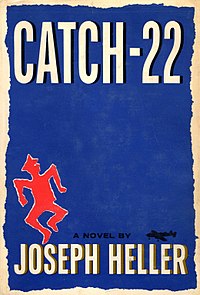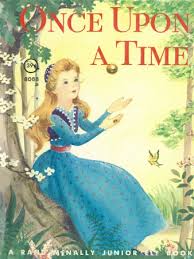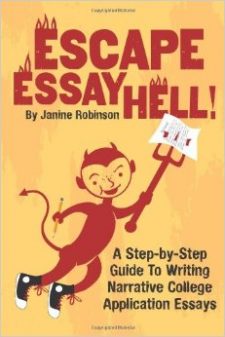by j9robinson | Sep 9, 2010
 It feels like a set-up. First, you are supposed to reveal how wonderful you are in 500 words–about the number you can cram onto a postcard in your teensiest handwriting. Second, you must sell yourself to the college of your dreams—setting yourself apart from the thousands of other equally wonderful students–but appear humble and likeable at the same time. Third, no one has ever taught you how to write this type of essay, called a personal narrative. No one. Ever!
It feels like a set-up. First, you are supposed to reveal how wonderful you are in 500 words–about the number you can cram onto a postcard in your teensiest handwriting. Second, you must sell yourself to the college of your dreams—setting yourself apart from the thousands of other equally wonderful students–but appear humble and likeable at the same time. Third, no one has ever taught you how to write this type of essay, called a personal narrative. No one. Ever!
I call this impossible challenge the Catch 22 of College Essays, at least the part about saying how great you are and staying meek at the same time. You know, make an impression but don’t dare try to impress anyone!! No wonder you are stressed out!!!
The best way to handle this challenge–and I have detailed how to do this all over my blog–is to stick with a story. And it doesn’t have to be a life-changing, mind-blowing event, either. In a weird way that I don’t quite understand, the less impressive the story—the more basic, simple, everyday, mundane it is—the better it will go over. (Learn more about the power of mundane topics.)
Here’s how it works: When you tell your story, you naturally show the reader about yourself. You can avoid that awkward tone of voice that sounds boastful when you describe yourself: I’m a really creative person. I’m really passionate. I’m really great at solving problems. For some reason, when you hear someone say something like that, your first reaction is to think, with great sarcasm, “Oh, you are, are you? Well, good for you!” Whereas, if you just describe the time you built a ten-foot sculpture out of driftwood, feathers, dryer lint and goat hair, the reader might think, without a hint of sarcasm, “Wow, that’s pretty cool. That girl sounds creative.” See the difference? More on Show, Don’t Tell.)
I know I’ve hammered on this, but find your anecdotes, your examples, interesting moments, and just describe what happened—and then examine what you learned from them. It’s hard to go wrong with a story.
Read this post on How to Write an Anecdote to get started telling your best stories!

by j9robinson | Sep 6, 2010
 If you have time, this essay (How to Say Nothing in 500 Words) is packed with invaluable advice that will help you make your college essay sing–and NOT bore those college admissions folks. An English professor wrote it in the 1960s after reading probably a zillion mind-numbingly dull essays during his long career. It’s long–and ironically a little yawny in places (revenge?)–and I mainly skimmed it for the juicy stuff.
If you have time, this essay (How to Say Nothing in 500 Words) is packed with invaluable advice that will help you make your college essay sing–and NOT bore those college admissions folks. An English professor wrote it in the 1960s after reading probably a zillion mind-numbingly dull essays during his long career. It’s long–and ironically a little yawny in places (revenge?)–and I mainly skimmed it for the juicy stuff.
Here’s one of my favorite parts, from the section called, “Slip Out of That Abstraction,” that describes why you should “show” instead of “tell” your points, and how to do it:
Look at the work of any professional writer and notice how constantly he is moving from the generality, the abstract statement, to the concrete example, the facts and figures, the illustrations. If he is writing on juvenile delinquency, he does not just tell you that juveniles are (it seems to him) delinquent and that (in his opinion) something should be done about it. He shows you juveniles being delinquent, tearing up movie theatres in Buffalo, stabbing high school principals in Dallas, smoking marijuana in Palo Alto. And more than likely he is moving toward some specific remedy, not just a general wringing of the hands.

It is no doubt possible to be too concrete, too illustrative or anecdotal, but few inexperienced writers err this way. For most the soundest advice is to be seeking always for the picture, to be always turning general remarks into seeable examples. Don’t say, “Sororities teach girls the social graces.” Say, “Sorority life teaches a girl how to carry on a conversation while pouring tea, without sloshing the tea into the saucer.” Don’t say, “I like certain kinds of popular music very much.” Say, “Whenever I hear Gerber Sprinklittle play ‘Mississippi Man’ on the trombone, my socks creep up my ankles.” By Paul McHenry Roberts.

(I also highlighted the strong verbs Roberts used here. In your college admissions essays and personal statements, go easy on the adjectives and adverbs–the ly’s–and push hard on those gritty, action verbs!)
by j9robinson | Sep 4, 2010

College Admissions Essays
A Step-By-Step Guide to Telling Your Story
Step 1: Write down 3-5 “defining qualities” about yourself.
Think of how one of your parents would sum you up to a stranger.
My Julie, why, she’s creative, ambitious, caring and has a mean stubborn streak. (You can use short phrases, too. “always tries hard,” “takes risks,” “is a fast study.”)
Step 2: Take one of those qualities and try to think of a time–it doesn’t have to be earth-shaking and probably only lasted about 5 minutes or so–when that quality was challenged, or formed, or tested, proven, or affected/changed.
HUGE HINT: Think about a problem, or an obstacle, conflict, challenge or some type of trouble, that involved you and that quality.
Step 3: If you can find an interesting moment, incident, experience or story to convey about a time when things went wrong for you, BINGO, you could have found a great topic!
ANOTHER HUGE HINT: The incident does not have to be when you fell off a cliff or were hit by a car.
Problems can take many forms, including a personal idiosyncrasy, or phobia, a challenge, or something (big or little, real or in your mind) that tried to stop you from doing something you wanted.
I will stop here. But in a nutshell, you can now relay the problem (in story form, called an “anecdote”) and then explain what you learned, and why, by dealing with it.
Yes, it’s a bit formulaic, but this might help you get going. Read my other posts, How to Write an Anecdote, Show don’t Tell, and Mundane Topics for more great advice.
by j9robinson | Jun 9, 2010

College Application Essays
How to Tell a Story
In journalism, writers often use “anecdotal leads,” that is, starting a news or feature story with a mini-story about a real-life event, one that puts the reader in the middle of the action.
Usually, the anecdote only describes a single moment or incident.
But it’s usually a highlight.
Something happened.
Anecdotes make great introductions for college essays. (I believe there’s no better way to “grab” your reader than to start a story–or your essay–at the most exciting part!) So how do you write an anecdote? Here are some tips.
- Start at the peak of the drama or excitement or conflict. Jump right in! (You will just back up and explain it later.)
- Set the scene: Describe what you see, what you hear, what you feel (both literally and figuratively), what you smell and taste, if relevant. These are called sensory details.
- Use the 5 Ws—Who was involved? What happened. Where did it happen? When did it happen? Why did it happen? ( “H”: How did it happen?)
- Paint a picture with your words, or even better, describe a snippet of video. Zoom in on the action.
- Usually the “action” in your anecdote takes place in a matter of a few minutes.
- Throw in a line or two of dialogue to add drama or move the action forward.
- Use “concrete details.” Be specific! Instead of saying, “The dog ran up to me.” Say, “the neighbor’s bull terrier, Brutus, charged me…”
- In general, use short sentences or mix up the short and long.
- Don’t worry about the background or explaining the larger context of the moment. You can back up and explain that in the next paragraph.
- Borrow techniques you find in fiction writing: concrete details, dialogue, proper nouns, descriptive language, emotion, strong characters, etc.
- Use simple language (avoid SAT vocab. words). Write with nouns and action verbs. Go easy on the adjectives.
- If your mini-story (anecdote) takes three paragraphs to relate, try to go back and see if you can cut it down to two or even one paragraph by keeping only what you need to re-create the moment. You will be surprised how you can shorten them, and actually make them better!
“Writing is easy. All you have to do is cut out all the wrong words.” Mark Twain
Here is another post about how to write anecdotes that you will find very helpful, too!
Check out my new video tutorial on How to Write an Anecdote: Part One!
 It feels like a set-up. First, you are supposed to reveal how wonderful you are in 500 words–about the number you can cram onto a postcard in your teensiest handwriting. Second, you must sell yourself to the college of your dreams—setting yourself apart from the thousands of other equally wonderful students–but appear humble and likeable at the same time. Third, no one has ever taught you how to write this type of essay, called a personal narrative. No one. Ever!
It feels like a set-up. First, you are supposed to reveal how wonderful you are in 500 words–about the number you can cram onto a postcard in your teensiest handwriting. Second, you must sell yourself to the college of your dreams—setting yourself apart from the thousands of other equally wonderful students–but appear humble and likeable at the same time. Third, no one has ever taught you how to write this type of essay, called a personal narrative. No one. Ever!








